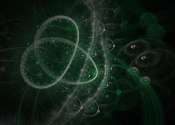A different spin on superconductivity—Unusual particle interactions open up new possibilities in exotic materials
When you plug in an appliance or flip on a light switch, electricity seems to flow instantly through wires in the wall. But in fact, the electricity is carried by tiny particles called electrons that slowly drift through ...







